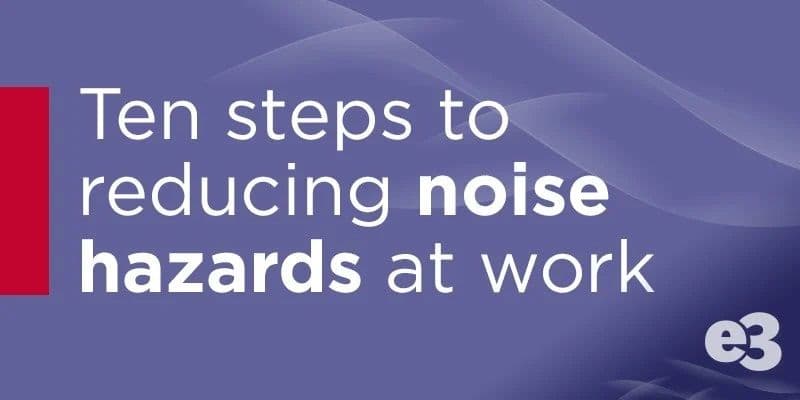Ten Steps to Reducing Noise Hazards at Work

Occupational Health and Safety Regulations 2007 S.R. No. 54/2007 Authorized Version states that “an employer must ensure that no employee at the workplace is exposed to noise that exceeds the noise exposure standard ….” So just how can an employer adhere to that regulation? And are there suggestions an employee who is at risk of sustaining too much noise exposure can make to their employer to ensure a safe environment?
Simply put, exposure to noise can be reduced by eliminating the source of noise (if possible). Here are ten potential ways to accomplish that:
The best way to reduce noise exposure is to engineer it out at the design stage. Employers should consciously choose features in new equipment that will reduce noise. Likewise, they should look for and eliminate any design flaws that could amplify noise.
For workplaces that own equipment that wasn’t designed with noise reduction in mind, engineering modifications that can help reduce noise exposure are an option. Employers should consider ways to reduce the noise emanating from conveyors, fans, and hydraulics by at least 10 dB. Replacing chain and gear drives with belt drives, substituting metal gears and parts with those made of plastic, and installing quieter running motors are positive steps to reducing noise pollution in the workplace.
Employees that are exposed to dangerous noise levels throughout their work day can suggest to their union boss or their employer to consider investing in noise barriers that can be positioned between the source of the noise and where employees are stationed. According to OSHA, doubling the distance between the source of the noise and the workers will decrease the noise by 6dBA.
Even better, if there is a way to totally isolate the noise from the workers, do it. Noisy equipment can be enclosed in a space or room that has acoustic louvers or sealed-off doors and windows.
Performing regular maintenance on factory equipment can reduce noise levels. Lubricating gears, fans, and all moving parts during a scheduled routine will aid in reducing noise hazards.
Employers can rearrange production schedules so that the noisiest equipment is in operation at times of the day or night when fewer employees are on duty. Then, too, limitations can be set up where the amount of time a worker must spend operating or being near excessively loud equipment is limited.
Establish a “Quiet Room” where employees can go to get away from any hazardous noise sources. The room should be constructed with soundproofing material and be available to an employee as needed depending on their individual duration of exposure to harmful noise.
Knowing it is not always possible to implement any or all the above noise-reducing solutions, employers must provide hearing protection to their employees. This includes ear plugs, ear muffs, or both. It needs to be stressed that wearing these solutions is not an option.
Additionally, in accordance with the Occupational Health and Safety Regulations 2007 (3.2.11), employers that are required to provide employees with hearing protection solutions must also provide workers with hearing tests within three months after the employee begins any work that requires the hearing protection; and at any time when reasonably requested to do so by the worker’s health and safety representative; and, in any event, at least every two years. These precautionary hearing tests can reveal how effective any noise-reduction measures are working or can be the basis for workers demanding more hearing protection from their employers.
Even after noise reduction measures have been implemented, and a hearing protection device program has been set in place, there are still signs and behaviors that cannot be ignored. If workers are fatigued on a regular basis, forced to rush through their job duties, or suddenly become complacent in the workplace, they may be more likely to ignore safety measures like wearing hearing protection. Employers should schedule training sessions that teach employees how to look out for each other and encourage one another to wear ear plugs or ear muffs. Everyone from top brass to the hourly employee needs to be reminded that once hearing is lost, it can never be restored.
